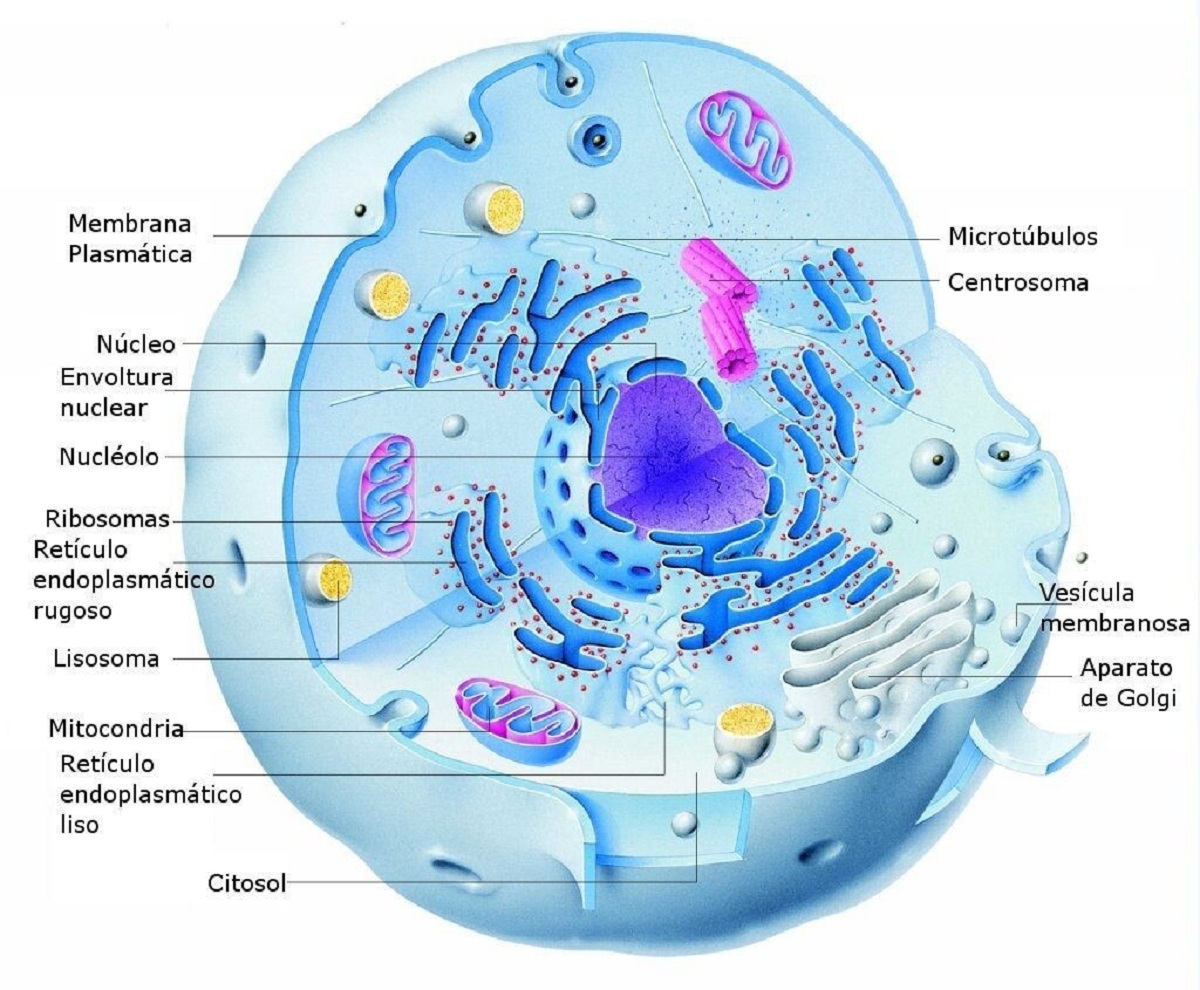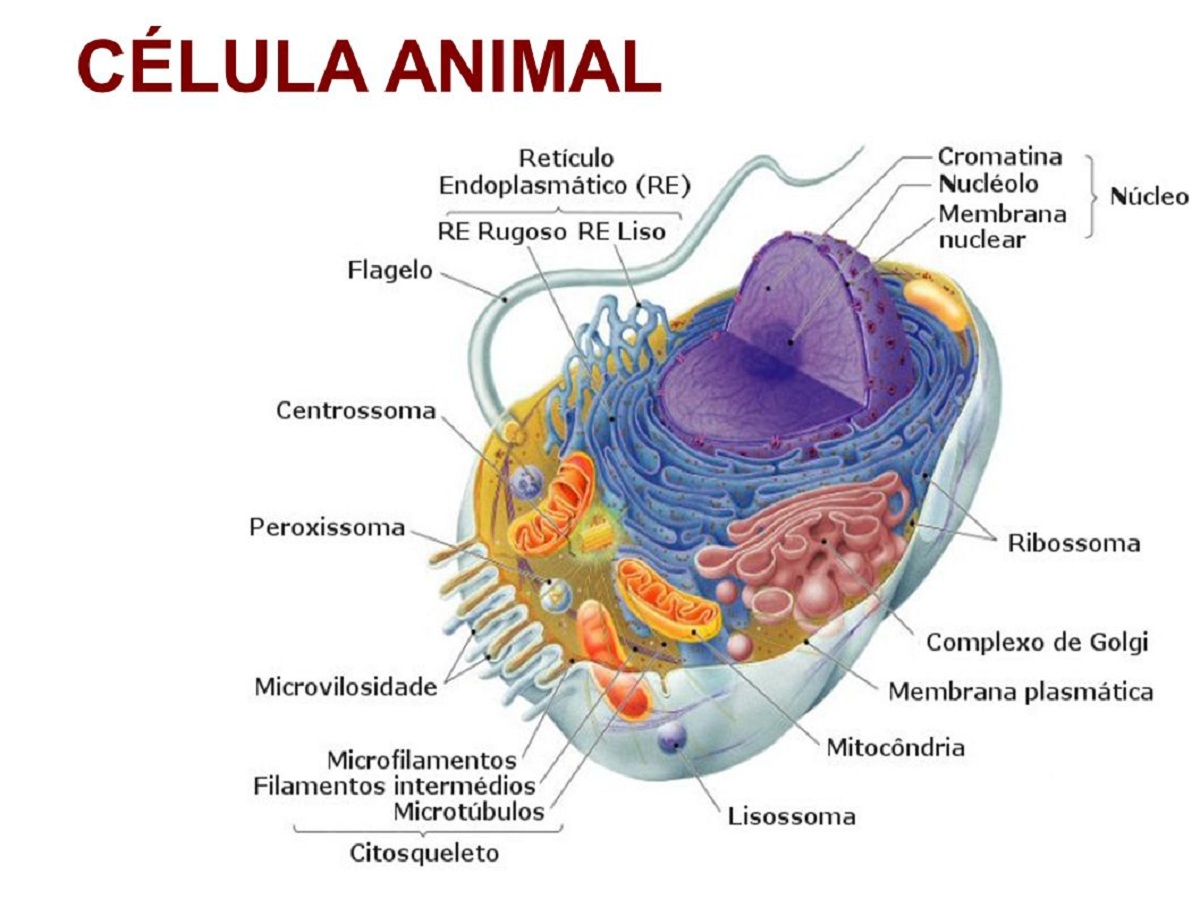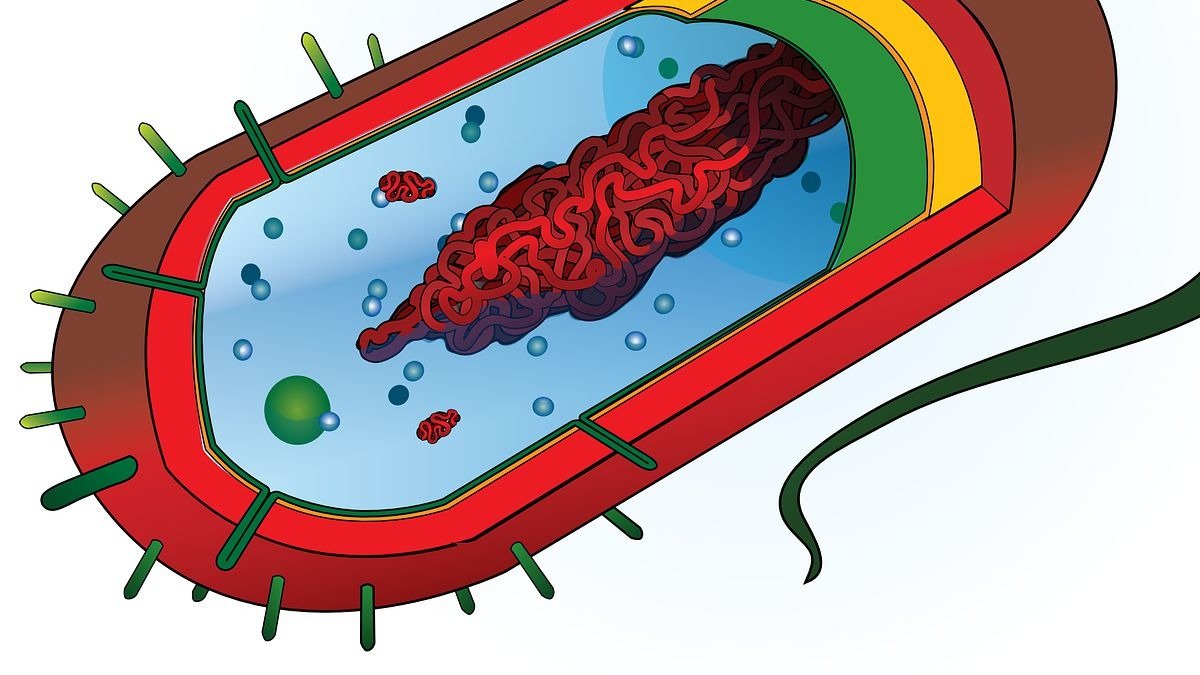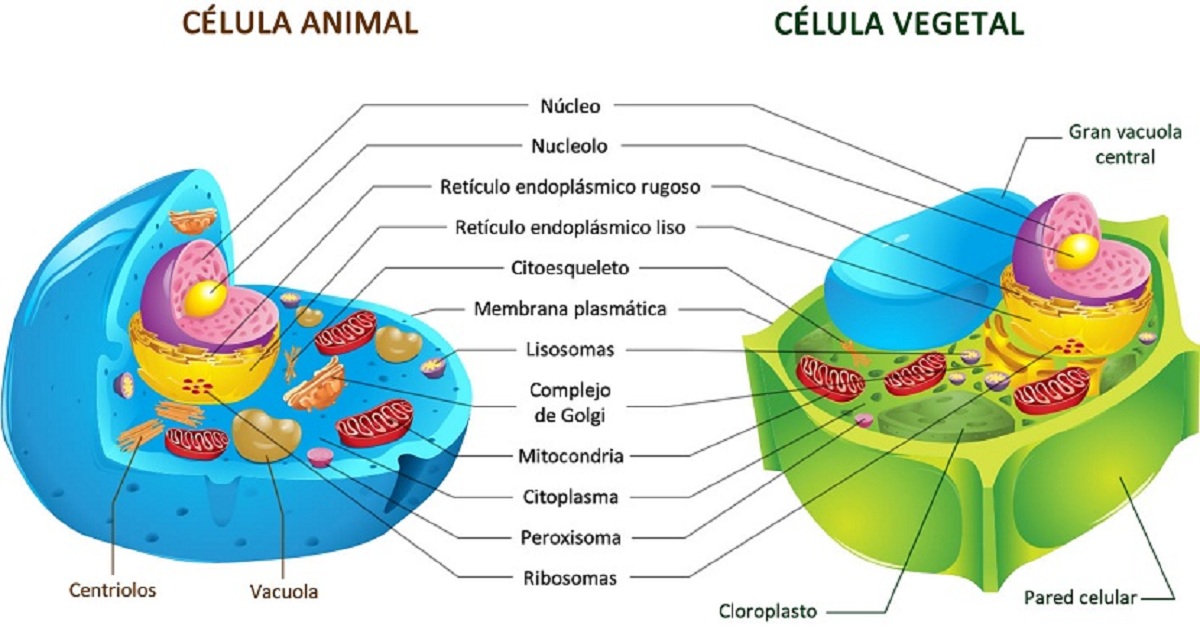
We know that the cell is the basic functional unit of all tissues in animals and plants. In this case, animals are considered multicellular organisms, so they have more than one cell. The type of cells that it usually has is the eukaryotic cell and it is characterized by having a true nucleus and different specialized organelles. However, there are various parts of a cell and each of them has a different function.
In this article we are going to tell you everything you need to know about the different parts of a cell and what is the main difference between an animal cell and a plant cell.
parts of a cell

Core
It is an organelle specialized in the processing and handling of cellular information. Eukaryotic cells usually have a single nucleus, but there are exceptions where we can find multiple nuclei. The shape of this organelle varies depending on the cell it is in, but it is usually round. The genetic material is stored in it in the form of DNA (deoxyribonucleic acid), which is responsible for coordinating the activities of the cell: from growth to reproduction. There is also a visible structure inside the nucleus called the nucleolus, which is formed by the concentration of chromatin and protein. Mammalian cells have 1 to 5 nucleoli.
plasma membrane and cytoplasm

The plasma membrane is the structure that surrounds the cell and is present in all living cells. It is in charge of enclosing these contents and protecting them from the external environment, this does not mean that it is a sealing membrane since it has pores and other structures through which certain molecules must pass to carry out the internal processes of the animal cell.
The cytoplasm of animal cells is the space between the cytoplasmic membrane and the nucleus, which surrounds all organelles. It is made up of 70% water and the rest is a mixture of proteins, lipids, carbohydrates and mineral salts. This medium is essential for the development of cell viability.
Endoplasmic reticulum and Golgi apparatus
The endoplasmic reticulum is an organelle in the form of flattened sacs and tubules stacked on top of each other, sharing the same interior space. The reticulum is organized into several regions: the rough endoplasmic reticulum, with a flattened membrane and associated ribosomes, and the smooth endoplasmic reticulum, more irregular in appearance and without associated ribosomes.
It is a set of tank-like membranes responsible for the distribution and delivery of chemical products from the cell, that is, it is the center of cellular secretion. It is shaped like the Golgi complex or apparatus of a plant cell and consists of three parts: the membrane sac, the tubules through which substances are transported in and out of the cell, and finally the vacuole.
Centrosome, cilia and flagella
The centrosome is a characteristic of animal cells and is a hollow cylindrical structure composed of two centrioles. arranged perpendicular to each other. The composition of this organelle is made up of protein tubules, which have a very important function in cell division since they organize the cytoskeleton and generate the spindle during mitosis. It can also produce cilia or flagella.
The cilia and flagella of animal cells are appendages formed by microtubules that give fluidity to the cell. They exist in unicellular organisms and are responsible for their movement, while in other cells they are used to eliminate environmental or sensory functions. Quantitatively, cilia are more abundant than flagella.
mitochondria and cytoskeleton
Mitochondria are the organelles in animal cells where nutrients arrive and they are converted into energy in a process called respiration. They are elongated in shape and have two membranes: an inner membrane folded to form cristae and a smooth outer membrane. The number of mitochondria present in each cell depends on their activity (for example, in muscle cells there will be a large number of mitochondria).
To complete the list of the main parts of animal cells, we refer to the cytoskeleton. It is made up of a set of filaments that exist in the cytoplasm and, in addition to its function of shaping cells, it also has the function of supporting organelles.
Differences between animal and plant cell

There are some main differences in the parts of both an animal and a plant cell. Let's see what the main differences are:
- Plant cells It has a cell wall outside the plasma membrane that the animal does not have. It is as if it were a second coating that covers it better. This wall gives it great rigidity and greater protection. This wall is composed of cellulose, lignin and other components. Some of the cell wall components have some applications in commercial and industrial settings.
- Unlike the animal cell, the plant cell has chloroplasts inside. Chloroplasts are those that have pigments such as chlorophyll or carotene that are what allow plants to photosynthesize.
- Plant cells are capable of producing their own food thanks to some inorganic components. They do this through the phenomenon of photosynthesis. This type of nutrition is called autotrophic.
- Animal cells, on the other hand, do not possess the ability to produce their own food from inorganic components. Therefore, its nutrition is heterotrophic. Animals must incorporate organic food like other animals or the plants themselves.
- Plant cells allow to transform chemical energy into energy into solar or light energy thanks to the process of photosynthesis.
- In animal cells, energy is provided by the mitochondria.
- The cytoplasm of the plant cell is occupied by large vacuoles in 90% of the space. Sometimes there is only one large vacuole. The vacuoles serve to store various products that originate during metabolism. In addition, it eliminates various waste products that occur in the same metabolic reactions. Animal cells have vacuoles but they are very small and do not take up as much space.
- In animal cells we find an organelle that is called a centrosome. It is the one in charge of dividing the chromosomes to create the daughter cells, while in plant cells there is no such organelle.
- Plant cells have a prismatic shape, while animal cells have different shapes.
I hope that with this information you can learn more about the parts of a cell and its characteristics.